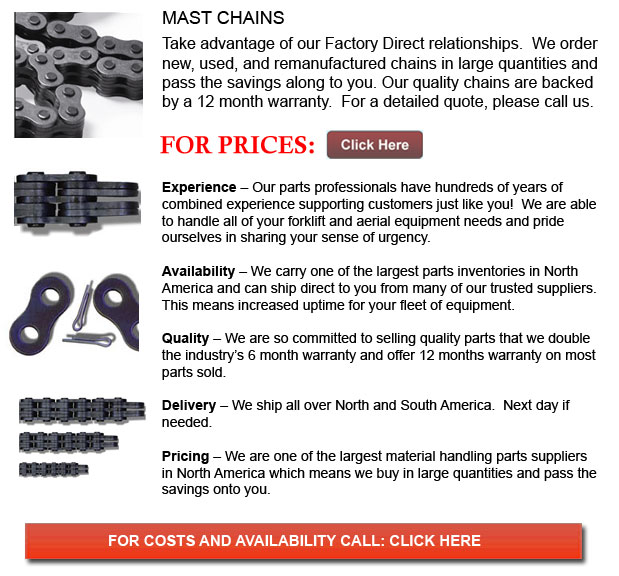
Leaf Chains comprise several functions and are regulated by ANSI. They are intended for tension linkage, forklift masts and for low-speed pulling, and as balancers between head and counterweight in certain machine gadgets. Leaf chains are at times even known as Balance Chains.
Construction and Features
Constructed of a simple link plate and pin construction, steel leaf chains is identified by a number that refers to the pitch and the lacing of the links. The chains have certain features like for instance high tensile strength per section area, which enables the design of smaller devices. There are A- and B- kind chains in this particular series and both the AL6 and BL6 Series have the same pitch as RS60. Finally, these chains cannot be driven utilizing sprockets.
Selection and Handling
Comparably, in roller chains, all of the link plates have higher fatigue resistance because of the compressive stress of press fits, while in leaf chains, just two outer plates are press fit. The tensile strength of leaf chains is high and the maximum allowable tension is low. Whenever handling leaf chains it is essential to confer with the manufacturer's guidebook in order to guarantee the safety factor is outlined and utilize safety measures all the time. It is a better idea to apply extreme caution and use extra safety measures in functions where the consequences of chain failure are severe.
Utilizing much more plates in the lacing leads to the higher tensile strength. As this does not improve the maximum acceptable tension directly, the number of plates used can be restricted. The chains need frequent lubrication because the pins link directly on the plates, producing a very high bearing pressure. Utilizing a SAE 30 or 40 machine oil is normally advised for most applications. If the chain is cycled over 1000 times in a day or if the chain speed is over 30m for every minute, it will wear really quick, even with constant lubrication. Hence, in either of these conditions utilizing RS Roller Chains will be a lot more suitable.
The AL-type of chains must just be used under certain conditions like for example if wear is really not a big concern, if there are no shock loads, the number of cycles does not go beyond a hundred every day. The BL-type will be better suited under different situations.
The stress load in parts will become higher if a chain with a lower safety factor is selected. If the chain is even utilized amongst corrosive conditions, it could easily fatigue and break really quick. Performing regular maintenance is essential if operating under these kinds of situations.
The kind of end link of the chain, whether it is an inner link or outer link, determines the shape of the clevis. Clevis connectors or likewise called Clevis pins are constructed by manufacturers but normally, the user supplies the clevis. A wrongly made clevis could decrease the working life of the chain. The strands should be finished to length by the manufacturer. Refer to the ANSI standard or contact the producer.
![]() Click to Download the pdf
Click to Download the pdf
Forklift Parts








Lift Parts Express Modesto
TOLL FREE: 1-888-695-7994
LOCAL: 209-343-9537
3430 Tully Road
Modesto, California
modestoforkliftparts.com
Email Us
About Us



